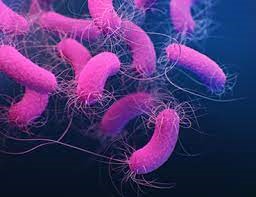Please click the frequently asked questions below for further information and IPC precautions required:
-
What is Pseudomonas aeruginosa?
Pseudomonas is a genus of Gram-negative, aerobic bacteria which contains almost 200 known species. Pseudomonas species are found widely in the environment, and some are part of the normal gut flora.
Pseudomonas aeruginosa is the species that most commonly causes infections in humans. Colonisation usually precedes infection. P.aeruginosa is intrinsically resistant to many commonly-used antibiotics, and can acquire antimicrobial resistance, making infections difficult to treat.

-
How does it spread?
Pseudomonas aeruginosa is commonly found in wet or moist environments, and can thrive in water systems. There have been serious P. aeruginosa outbreaks in adult and neonatal intensive care units, where the cause was thought to have been contamination of the tap water supply.
It is a Contact Spread organism. Transmission is possible from contact with colonised environmental sources or the skin of colonised individuals.
-
What are the symptoms of P. aeruginosa?
It is an opportunistic pathogen: while it can cause minor infections such as folliculitis in healthy people, severe infections usually only occur in people who are immunocompromised or whose defences have been breached, such as oncology patients, neonates, severe burn patients, those with invasive medical devices, and people with cystic fibrosis. P.aeruginosa infections in vulnerable people can include: bacteraemia, pneumonia (including ventilator-associated pneumonia), infections of wounds, gastrointestinal tract and urinary tract infections.
-
Why is this important?
If NIAS staff are aware that the patient has a suspected or confirmed case this should be communicated to the Control Room (Emergency or Non-emergency as appropriate) and the staff in the receiving unit when transferring the patient to ensure effective patient care and management.
This is particularly essential if the patient is immunosuppressed or is being admitted to NICU or other augmented care areas.
-
IPC Precautions
- Standard Precautions should be used.
- Contact Precautions may be required with high risk patients such as those who are immunosuppressed or Neonates. This can be discussed with the IPC team.
- Hand Hygiene should be completed as per the 5 moments in line with usual practice.
- Eye protection should be risk assessed for any concern regarding a splash risk.
- Gloves and Aprons should be risk assessed and worn if contact with the patient’s blood or bodily fluids.
- Laundry should be treated as per standard policy.
-
What cleaning is required?
All equipment and the ambulance should have an in-between patient clean, paying particular attention to touch points.
-
Do staff need prophylaxis or follow up?
No staff follow up required.




